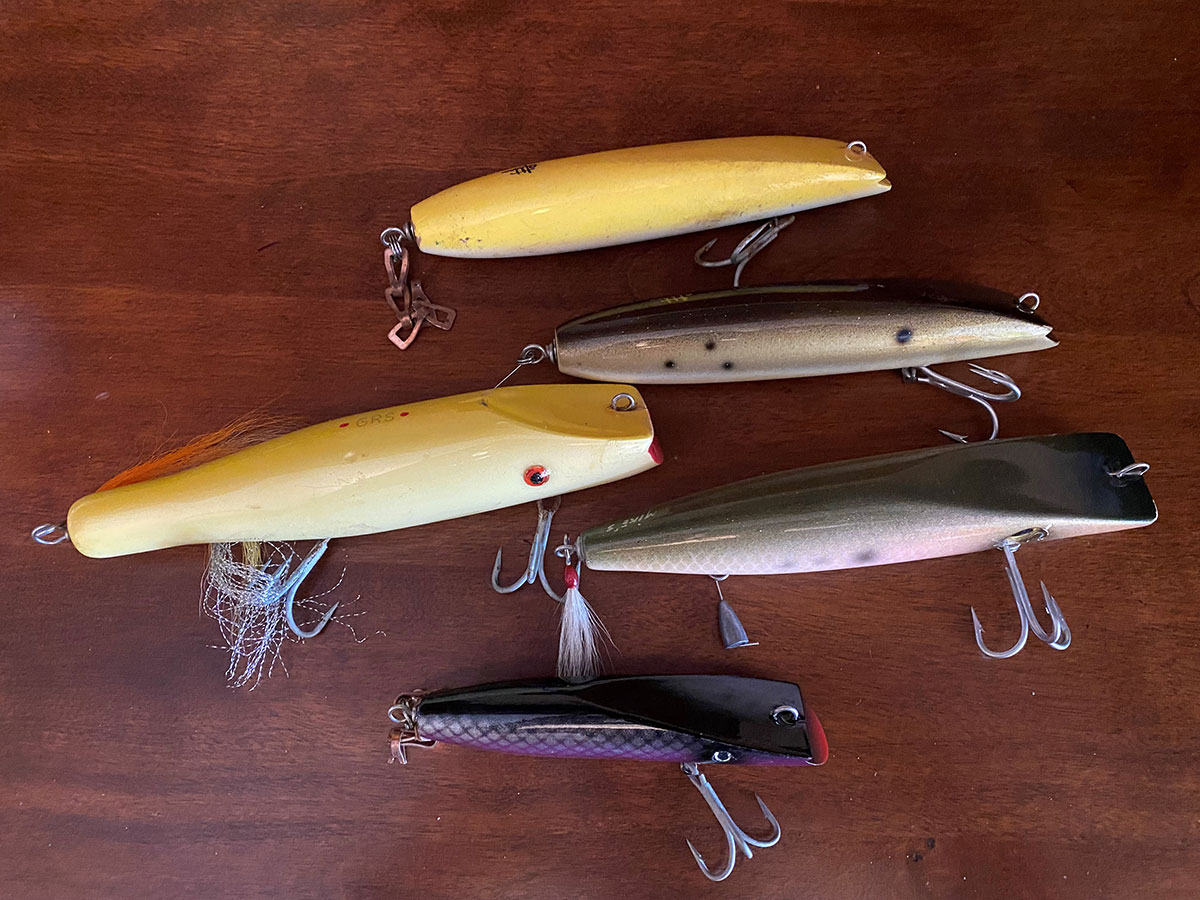
A deep dive on darters with many expert opinions.
The uniquely-erratic swimming action of a darter makes it an unusual character among the rest of the options in the surfcaster’s arsenal, being less mechanical and more lifelike. I almost always reach for a darter when fishing moving water. Big fish have shown me why I wanted to fish them.
I love the plastic Super Strike Darter and the North Bar darter gets a place in my bag, but I also use custom wood darters. While plastic darters are uniform since they are molded, custom wood darters have a reputation for being difficult to make. I decided to speak with a custom builder of a sought-after darter just to find out a bit more about the plug. The answer to my questions about making them surprised me, “I put a lot of time into testing it, getting it right. I don’t want to talk about it.” Now my interest was really up. What was it about making this plug worthy of secrecy?
As I asked around I found that darters are just more difficult to build than other plugs. The anonymous builder I mentioned did add that he can build four metal-lip plugs in the time it takes him to make one darter. From a profit standpoint, even if a darter sells for $40 or $50, it’s still a loss in comparison to metal lips.
Larry Welcome of Sporting Wood builds an epoxy-impregnated, pine darter following the head and lip design of Jack Frech. By changing the weighting, Larry has created a very stable darter that overcomes one of the primary shortcomings of many darters, the tendency to roll in strong current. What he found most challenging, however, was the wiring through which, unlike in metal lips, requires multiple tools and steps. This process is tricky and can lead to disaster. Don Guimeli of AfterHours Custom Plugs finds that unlike with other plugs, some darters are ruined when they crack during wiring.
In most plugs once the wiring through process is completed it is ready for sealing and painting, but not the darter. With darters the question of the line tie still remains. The line tie is critical to the swimming action of darters. If placed in the lip the plug will move more like a swimmer, without the less predictable swimming action. As with much about the darter this is not ironclad: some darters such as the L69 darter move in a somewhat random fashion even though the line tie is placed in the lip.
In terms of placement of the line tie Gary Soldati of Big Water Lures notes the issue is one of trade-offs: move the lie tie further back on the sloping cut and you get more action, but if the line tie is placed too far back on the slope the darter rolls and becomes unstable.
Most builders place the line tie right above the top lip. It must be perfectly aligned: if the line tie is off center the plug is again useless as it will veer off to one side. This requires precise vertical placement by epoxying the line tie into a groove. If the line tie comes loose the action of the plug is also ruined. The whole process of wiring takes much longer than with other plugs, about 20 minutes.
The finicky, unforgiving nature of the darter is not confined to wiring. Mike DeSanto of Mike’s Custom Plugs builds three sized darters, with “The Beast”, the largest, weighing in at 4-1/2 Ounces. This darter swims deep and makes a fine large bait presentation. When I spoke with Mike he emphasized the extreme care he takes with all his cuts. Slight irregularities that might go unnoticed in other plugs can lead to poor results when making a darter. Alone among the plug makers I spoke with, Mike builds his darters in two pieces and then epoxies them together.
Another challenge is finding the right angles for the slope of the head. Glen Lewis of GooGoo Man Lures explained that the sloped head of the darter is actually comprised of three cuts, and the angle of these cuts must be in precise proportion to one another for it to swim properly. The cut for the mouth is less problematic, typically a 45-degree cut. Glen thought that some of the news builders hadn’t figured out the correct angles of the slope.
Even the consideration of the wood used is more complicated with darters. Glen tends to obsess over the wood he uses, weighing every piece of wood to ensure that all his darters are uniform in weight. With a three-ounce darter (about 85 grams), a fluctuation as little as one to two grams can make the difference between a fish-catching killer and something entirely ordinary.
Keeping the weight consistent is extremely challenging. Glen believes that if you make a batch of 10 maple darters, two will swim great, four or five will be okay, and three or four not so good. Even with yellow cedar, if the drill bit hits a soft spot it will drift, ruining the plug. Building a darter requires more care, is more time consuming, more prone to ruin, but the result is a graceful, unique lure.




